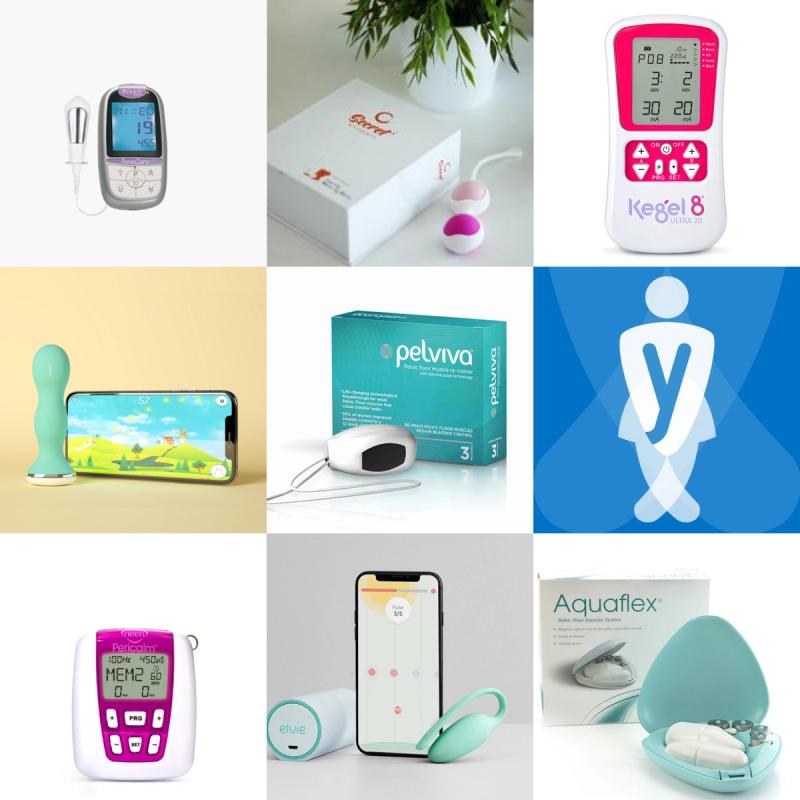Pelvic Floor Gadgets (Vadgets)
Guest blog by Amanda Savage, specialist pelvic health physiotherapist
Research has shown that most women can massively improve the strength, tone and skills of their pelvic floor muscles by simply doing regular pelvic floor exercises (aka kegels). But if you love a gadget, then there are some great inventions to aid with remembering to do your exercises, enhancing your skills, having a bit more fun at getting the job done, or helping your muscles along if they are struggling.
Pelvic floor muscle stimulation devices are often recommended by physiotherapists for women who can’t tell where their muscles are or for very weak muscles. They send electrical impulses to the pelvic floor to make the muscles contract for you.
The majority of the stimulation units deliver the electrical current by a battery-operated handheld unit to an internal vaginal probe. A newer design uses a wireless single-use electrode which generates the electrical impulse within the body. If you can’t use an internal electrode, it is also possible to stimulate muscles using skin electrodes (like the ones for a TENS machine) but it can sometimes be difficult to generate a strong enough impulse this way. There are also anal probes for targeting the back part of the pelvic floor for women with bowel symptoms or sphincter problems.
Generally physiotherapists advise that if you can already contract your pelvic floor muscles correctly you don’t need a stimulation unit. You just need to practice doing your exercises regularly & effectively! There are three gadget options here:
Pelvic floor biofeedback devices show you what you are doing with your muscles when you contract them using your own brain. An internal vaginal device connects to a small monitor, or newer designs connect by bluetooth to your phone. Some work by sending an electrical impulse from you to the machine, others respond to pressure or another type of sensor. You get something visual to look at -- from simple coloured lines or graphs, to moving objects, and even games involving rockets and butterflies. Some beep or vibrate as well. They can be helpful for you to check that you are doing your exercises correctly, especially if you need to focus on relaxing fully between contractions.
Vaginal weights or cones are designed to make strong pelvic floor muscles work even harder - just like you might push or pull weights in the gym. You insert them in your vagina and hold them in place while you do another activity. They are designed to improve endurance for when we are lugging shopping or carrying toddlers or trying to enjoy prolonged exercise.
Tracker apps help you remember to do your pelvic floor exercises, keep track of your progress, or prompt you to follow a sequence to make sure you regularly perform a full range of skills. There is nothing connected to you but many women find having a visual cue to follow while they practice is motivating, stops them rushing and helps them chart their progress.
If you are experiencing bladder or bowel control problems, or pain, or are worried about prolapse, I highly recommend that you arrange to talk to a specialist women’s health physiotherapist and have a vaginal examination for a personal pelvic floor assessment. You can self-refer on the NHS (or via your GP or midwife) or choose to go to a private clinic. Your physio will guide you exactly how to exercise and can also work on your holistic fitness. They will help you access further investigations if needed.
You can find more detail, pictures, product links and videos about pelvic floor exercises including lots about gadgets & devices on Amanda's website



